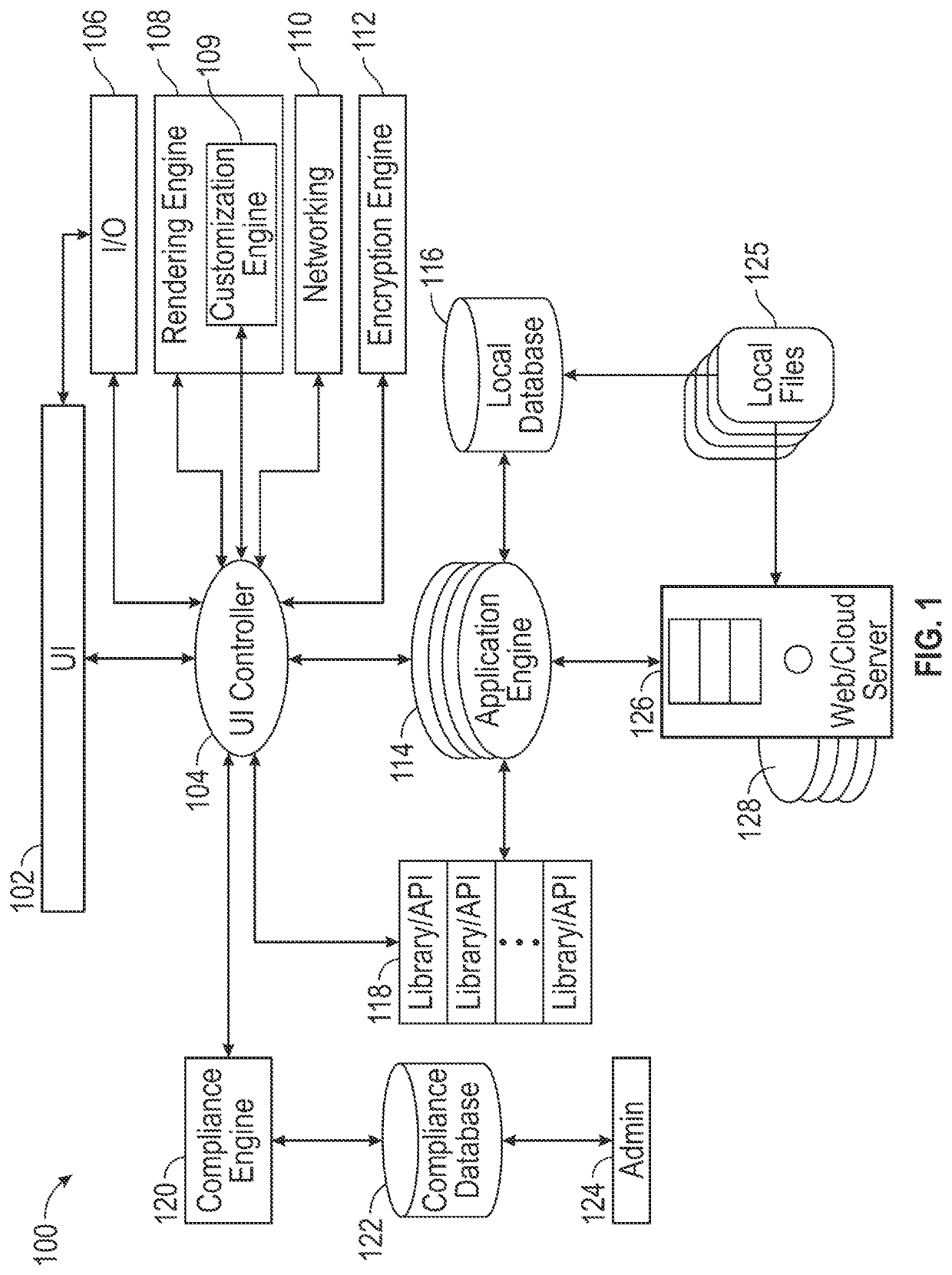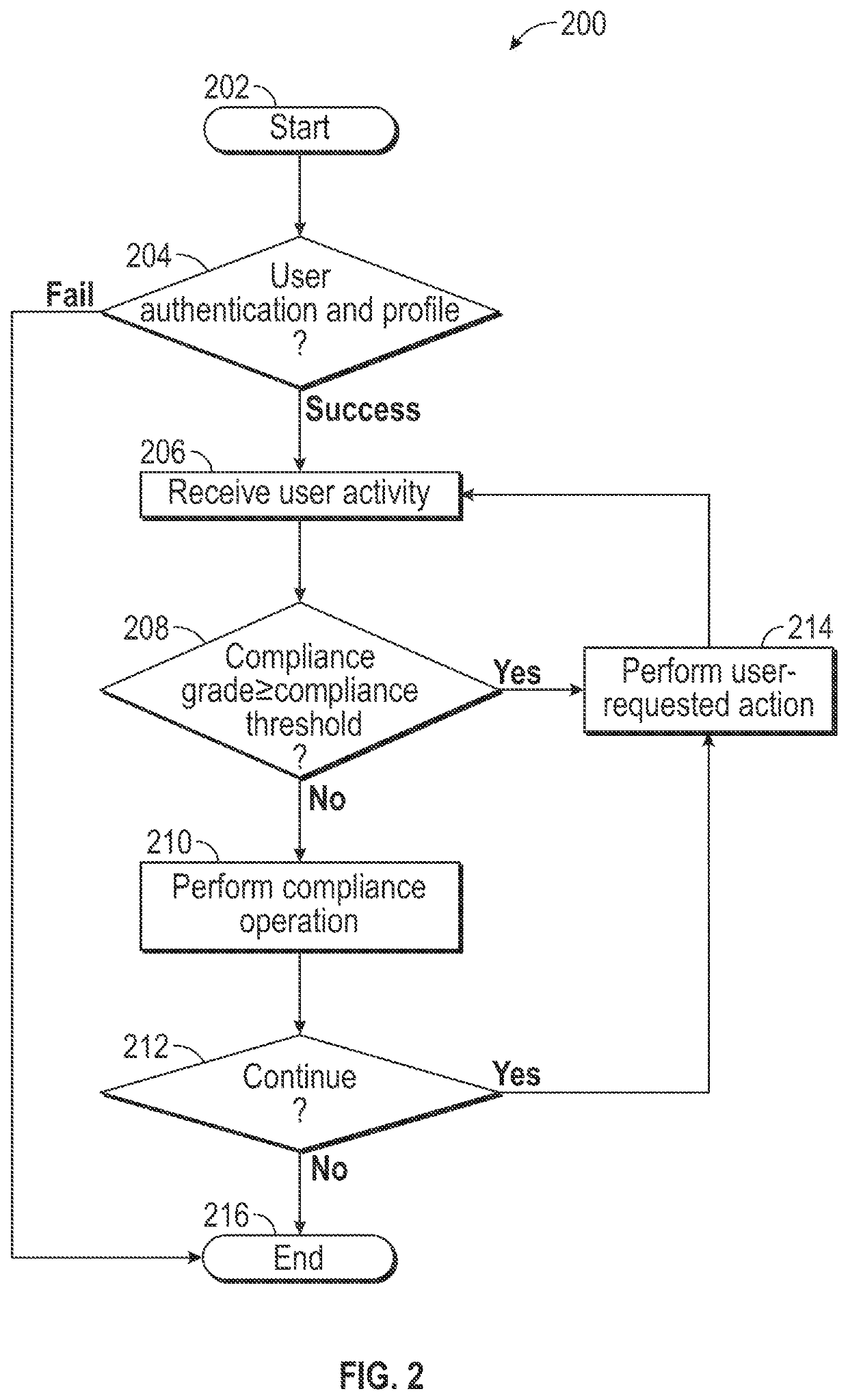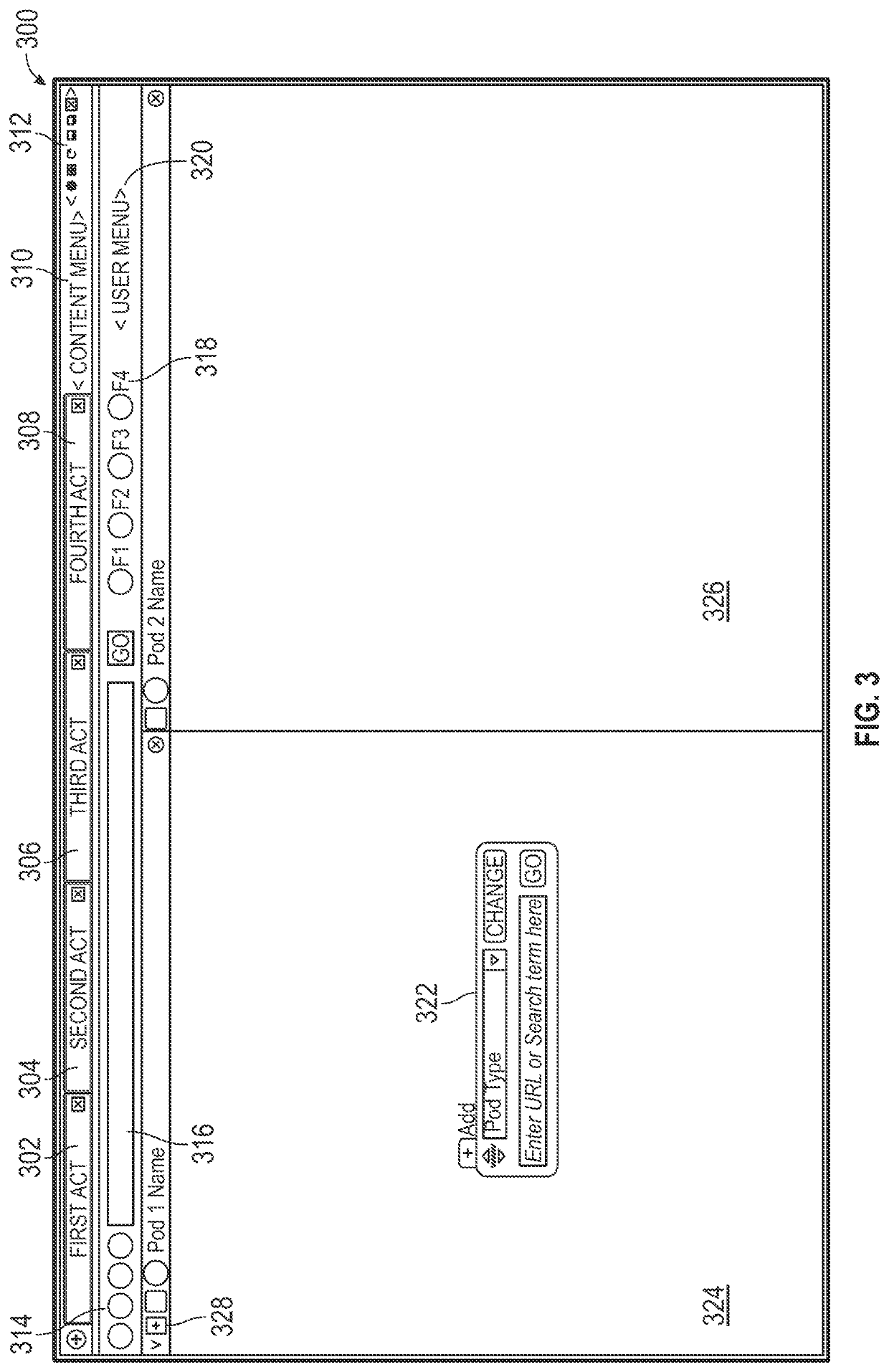Systems and methods for regulation compliant computing
a technology of computing and systems, applied in the direction of electric transmission signalling systems, user interface execution, instruments, etc., can solve the problems of no controlling government or government-delegated authority setting standards, protocols or accreditation as to whether compliance, and auditors do not have standards, etc., to achieve the effect of removing or reducing the compromising features of the requested application
- Summary
- Abstract
- Description
- Claims
- Application Information
AI Technical Summary
Benefits of technology
Problems solved by technology
Method used
Image
Examples
examples of ui 102
[0097]Examples of UI 102
[0098]FIG. 3 illustrates an example interactive display 300 which can be generated by the embodiment of FIG. 1 as the UI 102. The interactive display 300 includes Acts 302, 304, 306 and 308. Each Act can include none, one, or multiple Pods. If an Act includes two or more Pods, the Pods can be simultaneously active and connected. In the example shown, Act 302 includes a first Pod 324 and a second Pod 326. Content menu 310 and buttons 312 can relate to and implement the operations, functionality and settings of an active Act and / or the interactive display 300 as a whole. These functions and menus can include a setting menu, a refresh button, a customize view button, close all function or similar global and / or Act-specific command buttons. In some embodiments, user is able to customize the view, button functionality or other display features. Such user personalization can be saved in a user profile on the local database 116. Compliance engine 120 can monitor and...
PUM
 Login to View More
Login to View More Abstract
Description
Claims
Application Information
 Login to View More
Login to View More - R&D
- Intellectual Property
- Life Sciences
- Materials
- Tech Scout
- Unparalleled Data Quality
- Higher Quality Content
- 60% Fewer Hallucinations
Browse by: Latest US Patents, China's latest patents, Technical Efficacy Thesaurus, Application Domain, Technology Topic, Popular Technical Reports.
© 2025 PatSnap. All rights reserved.Legal|Privacy policy|Modern Slavery Act Transparency Statement|Sitemap|About US| Contact US: help@patsnap.com



